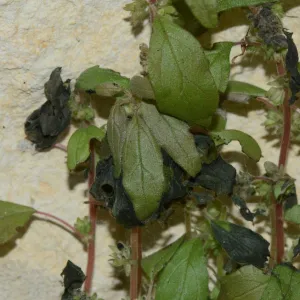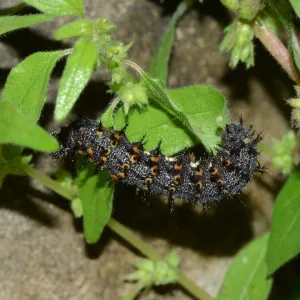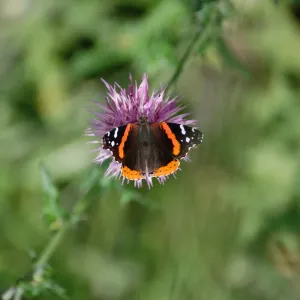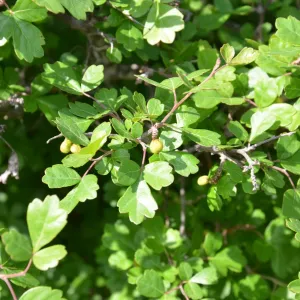by Delmar Cain – Boerne Chapter, Native Plant Society of Texas
Published in Boerne Star on May 1, 2015
A moist April can lift spirits, especially when the cold winds in March left reminders of cranky ankles and gimpy knees. As if in a cartoon the flowers seem to suddenly appear when the sun peeps through the clouds.
A wet April like the one we have just had always reminds me of Miss Aycock, my high school English teacher, who required, as did many other English teachers, that her students memorize in Middle English the first lines of the Prologue of Chaucer’s Canterbury Tales.
Whan that aprill with his shoures soote
The droghte of march hath perced to the roote,
And bathed every veyne in swich licour
Of which vertu engendred is the flour;
It was in April that the folk in the Canterbury Tales traveled together on a pilgrimage to pay homage to the blessed martyr in Canterbury. And now just as then, April is a wonderful time to go on pilgrimages to pay homage to the wonders of the season.
Unfortunately for me spending some time on a crutch has meant not only that my trips are short but also that pulling even the most aggressive and opportunistic annuals has been delayed. But even a short “pilgrimage” can have its own rewards.


Pelitory (Parietaria pensylvanica) also known locally as cucumber weed grows far and wide especially in a wet season. It grows next to our house, between rocks in our crushed granite terraces and in fenced areas protecting tender plants from deer.
I noticed small blacken leaves on some of the cucumber weed and decided to give a closer look. I found small folded shelters, many of which were covering a black prickly caterpillar with white on its sides. After some investigation on the net I determined that the caterpillar was the larva of the Red Admiral butterfly.

The Red Admiral (Vanessa atalanta) is native to all of the lower United States and much of Canada. This colorful black, white and red butterfly is easily recognized. Found in most open areas a male will sit on high spot and wait for females. When anything moves into the area, the male acts like a dive-bomber but then zips back to its spot. If cucumber weeds means Red admirals, then I say let them grow.
Lowly native weeds like cucumber weed are just as important in supporting wildlife as some of our most beautiful native plants. Native plants are the foundation of native wildlife and turn the energy of the sun into the food for insects, birds, fish, reptiles and small mammals and large mammals. Each of those in turn becomes food for something higher on the food chain.
Some insects, some birds, some small mammals and some larger mammals are generalists. Like the feral hog the generalist will eat anything that it can find. But others are specialists like the monarch caterpillar, which eats only milkweed. Specialists do not move on to the next species of plant. If you remove the host plant from the habitat, you doom the specialist as well.
Because of the importance of native plants in supporting all of the wildlife in our state, which is truly one of our state’s most treasured heritages, The Native Plant Society of Texas and the local Boerne Chapter supports the conservation of native plants and of native plant habitats. We try to educate about our native plants and encourage the nurturing and planting of native plants in yards, at businesses, in public spaces and along the public rights of way. In the words of one of our members, Scott Barthel, we want to encourage you make your yard into “an oasis for wildlife” rather than a high-maintenance still life.
In one of our programs, NICE (Natives Instead of Common Exotics), a knowledgeable committee recommends a native Plant of the Month. We work hard to suggest plants that are attractive, drought tolerant and adapted to our area. Even though you might still consider a pilgrimage to Canterbury, a walk in your yard can provide solace also.

The Plant of the Month for April is the fragrant sumac (Rhus aromatica), a fast growing shrub that has flowers that will attract butterflies, red berries that may get you a sighting of a Townsends Solitaire, which occasionally wanders this far east, and has wonderful fall colors of red, yellow and orange. In addition you can stump your friends and neighbors about a plant that can be known as fragrant sumac, aromatic sumac, lemon sumac and polecat bush, all at the same time. For planting instructions go to the Plant of the Month on the Boerne Chapter website at: http://www.npsot.org/wp/boerne/
If this article in any way reminds you of something that you have heard before the collection plate is passed, there is good reason. The Boerne Chapter of the Native Plant Society is a non-profit and we are signed up as part of The Big Give S.A. If you have enjoyed the Native Grown articles from Bill Ward through the years or the others who have tried to fill his shoes, or if the work or the goals of this organization are something that you would like to support, now is the time you can easily make that happen.
On May 5, 2015 go to The Big Give S.A website at: https://thebiggivesa.org and type in Native Plant of Boerne / Boerne Chapter and make your donation. It is a volunteer organization and every dollar that you give will support the cause. My donation is going to honor Bill, Kathy and Louise Ward.
Even if you decide not to give you are invited to join us at our monthly meeting on the first Tuesday of every month at 6:30 PM at the Cibolo Nature Center in Boerne.
Finally if you are interested in translating the quoted portion of Chaucer’s Prologue from Middle English or if you want to read more in either Middle English or Modern English you can do so at: http://classiclit.about.com/library/bl-etexts/gchaucer/bl-gchau-can-genpro.htm Miss Aycock definitely would have encouraged you to do so.
